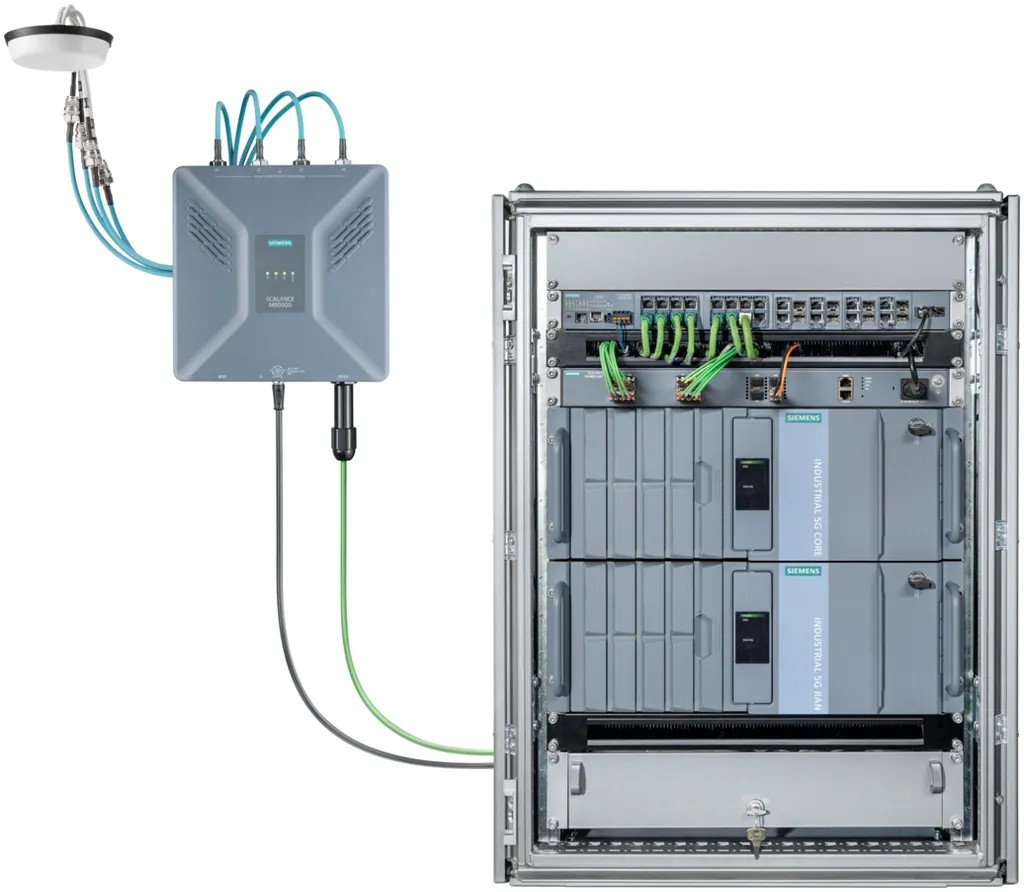Siemens has expanded coverage of its private 5G product for Industry 4.0 customers, both in terms of its radio support and commercial availability. The new version covers larger industrial areas, now supporting up to 24 radio units, each with capability to supply 5,000 square metres of 5G coverage. It is now available to industrial customers in Austria, Brazil, Denmark, the Netherlands, Sweden, and Switzerland. Siemens has only sold private 5G in its home market until now.
The German firm said it will expand to additional countries throughout 2025. The move flags its intention to be a genuine contender in the global (industrial) private 5G market. It didn’t feature at all in a recent Gartner review, even as a ‘niche player’ – which perhaps reflects more on Gartner’s limited view of the market. Kaleido Intelligence ran the rule over Siemens in a parallel review, apparently, but did not see fit to make more than passing mention.
The new upgrade might just change all that; it will certainly give Siemens a much wider base of customers to sell into. The first release of the product, launched in 2023, was limited to only three radio units, and sold only to existing customers in Germany. Siemens has also released a new compact entry-level industrial 5G router, the Scalance MUB852-1, part of its Xcelerator portfolio, for cabinet use with IP20 protection class.

The router matches the company’s Simatic ET200 I/O footprint and integrates with its so-called Totally Integrated Automation (TIA) ‘landscape’, it said. A statement said: “The system features an innovative, user-friendly approach with a straightforward configuration process that only requires about 20 variables in a single comprehensive Web user interface. A clearly arranged dashboard offers a comprehensive overview of the network status making it accessible even for non-IT users.”
It went on: “While many industry solutions require specialized expertise, Siemens’ approach prioritizes user-friendly operation and simple implementation to support mission- and business-critical applications… The system allows companies to operate their networks independently without relying on third-party providers, which ensures enhanced cybersecurity and data privacy thanks to on-site installation.”
Axel Lorenz, chief executive of process automation at Siemens, commented: “We’re meeting the growing demands of modern manufacturing environments. The industrial world is moving away from the ‘one-size-fits-all’ approach to wireless connectivity… We’re giving manufacturers the tools to design their digital backbone exactly the way they need to, whether they’re running a single production line or an entire smart factory complex.”
Writing in these pages in December, Daniel Mai, director of industrial wireless at Siemens, said there will be a “significant shift from [private 5G] pilot projects to comprehensive implementations” in 2025. He said standardization of regional private spectrum allocations, particularly at 3.8-4.2 GHz in Europe, will accelerate industrial interest and deployments, with the discrete and process manufacturing industries, where his firm specialises, leading the way with “sophisticated robotics systems and fully autonomous production lines”.
In terms of private 5G technology itself, he said: “Network management capabilities will become more sophisticated, allowing different parts of the network to be allocated for specific tasks, ensuring critical operations receive highest priority. This capability is particularly crucial in industrial environments where even millisecond delays can cause significant production disruptions.
“Looking toward 2025, private 5G will increasingly serve as the foundation for industrial digital transformation. While the technology is still in its implementation phase, its potential for revolutionising industrial automation is immense. The combination of ultra-low latency and deterministic, high reliability, and the ability to connect massive numbers of devices will enable new levels of operational efficiency and innovation. Success will depend on the ability to align network capabilities with specific use cases while ensuring data sovereignty – a key advantage of private networks where data remains within the campus environment.”

